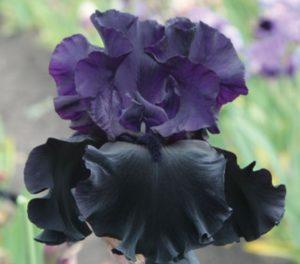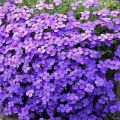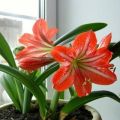Planting and caring for room saxifrage at home
Saxifrage is a common ground cover plant used for landscaping a site, creating rockeries and alpine slides. Possessing a high decorative effect, she fell in love with both ordinary summer residents and eminent landscape designers. But the saxifrage can not only decorate a garden plot, but be a spectacular and beloved indoor plant.
Description of the plant
Saxifrage is a herbaceous perennial belonging to the Saxifrage family, which unites more than 400 species. In the wild, saxifrage grows in temperate climates throughout the Northern Hemisphere. The saxifrage is able to grow successfully in conditions in which most plants cannot survive.
It got its name due to its ability to grow on rocky ground, at the foot of mountains and on rocks. The saxifrage clings to small cracks in the stones with its roots and gradually destroys them. The popular name of the culture is "tear-grass". It is widely used by gardeners and landscape designers around the world as a groundcover.
Saxifrage is a rhizome flower with long, creeping shoots. Reaches a height of 5 to 70 centimeters. The plant feeds on numerous thin and branched roots. They are present both at the base of the bush and grow in the internodes of the shoots that touch the ground.
The leaves are petiolar, collected in a basal rosette, and differ greatly in different species. They are diamond-shaped, oval, heart-shaped, or feathery. They can be both smooth and pubescent. The color of the foliage also differs, but always a lime-white bloom forms on it. The leaves are dark green, silvery, bluish and bluish.
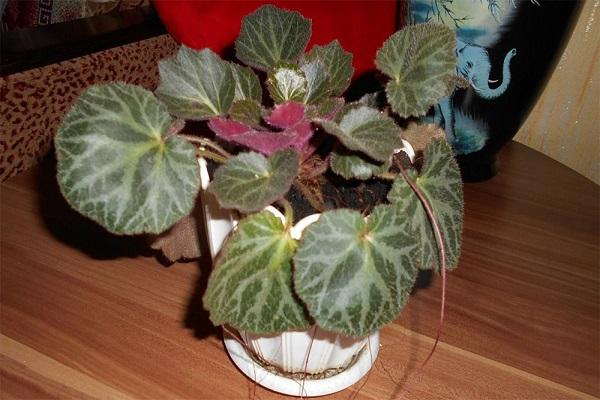
Varieties and varieties of saxifrage for home cultivation
Some species and varieties of saxifrage are grown not only in flower beds, rockeries and alpine hills, but also at home. It is especially effective to use it as an ampelous plant.
Wicker saxifrage
This is a graceful ampelous plant belonging to the Saxifrage family. Naturally grows in the Asia-Pacific region, in crevices of rocks and on rocky cliffs. Most often this species is grown at home. Wicker saxifrage is a beautiful and spectacular herbaceous perennial. She is characterized by high decorativeness, and caring for a flower is not difficult.

The leaves of the saxifrage are round, straight and concave, green above with silvery veins, and reddish on the underside. They are assembled into tight, flat sockets. All parts of the plant are densely pubescent. From the leaf sinuses of the saxifrage, a thin mustache, painted in red, grows massively. At the ends of the whiskers, small rosettes are formed, similar to small spiders.
Blooms from May to September, flowers are inconspicuous, smallish. Peduncles grow from the center of the leaf rosette. Flowers of irregular shape, pink or white, collected in loose panicles. An excellent option would be to grow in hanging pots. Adult plants acquire a special decorative effect. They are literally hung with many intertwined mustaches of various lengths, studded with different-sized rosettes.
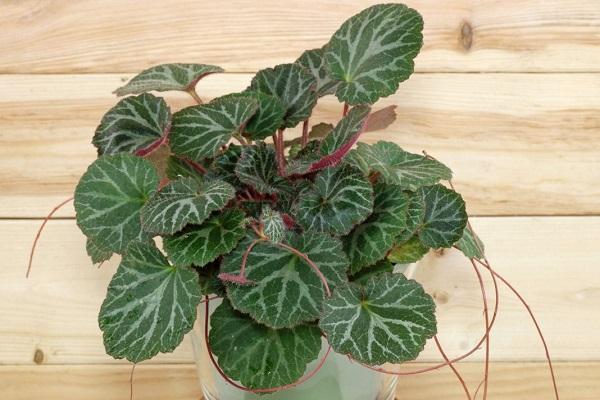
Saxifrage cotyledon
The second name is thick-leaved. Often found in the mountains of northern Europe, the Alps and the Pyrenees. In Norway and Iceland, it often grows on solidified volcanic lava. It has high decorative qualities, it looks like succulent plants, in particular, Echeveria.
The leaves are dense, fleshy, green, with edges covered with small teeth. They are oval or tongue-shaped, collected in a root rosette. Leaves with intense glossy shine, edges covered with white limescale.
Numerous white flowers are collected in paniculate inflorescences (up to 40 centimeters wide), located on high (20 to 60 centimeters) peduncles. They are aligned, star-shaped, whitish-pink in color. Interestingly, the size of the inflorescences is many times the size of the plant itself. Blooms throughout June.
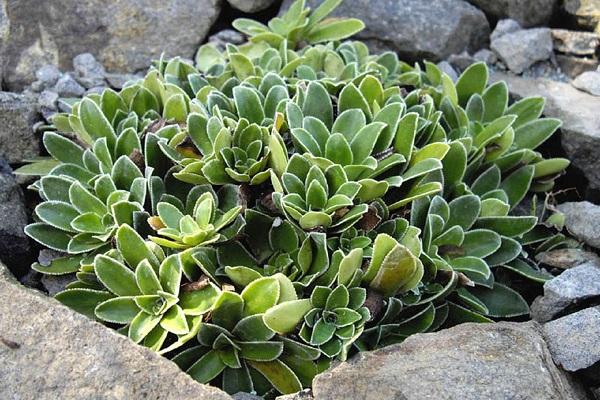
Arends' saxifrage
An original groundcover perennial that forms a dense, bright green carpet. It is attractive and easy to care for. It is widely used by designers to create rockeries and alpine slides. The first to domesticate plants growing in the wild was the German breeder Georg Arends.
Arends's saxifrage is a bit like moss. The lower leaves die off every year, and new foliage grows in the tops. Therefore, the shoots of saxifrage are brown at the base and green at the top. When blooming, the appearance of the plant changes greatly.
At first, numerous 15-20-centimeter flower stalks grow over the plants. And then the luscious, green leaves are covered in a thick carpet of star-shaped white, pinkish and red flowers. Interestingly, red flowers appear much less often than white and pink ones. Today, Arends's saxifrage is represented by many different varieties, and their planting will add originality to any flower bed:
- Blutenteppich;
- Highlander;
- Schneeteppich;
- Flamingo;
- Purplemantel.

Post-purchase actions
After the purchase, the saxifrage pot must be placed in partial shade. If the substrate is dry, it must be well moistened. Transplanting a plant into a new pot can be carried out no earlier than a week later. Moreover, not transshipment is carried out, but planting, with preliminary cleansing of the root system from the old substrate.
An important point - before planting, to protect against diseases and ground pests, the rhizomes are soaked in a solution of a fungicide and an insecticide.
Indoor flower care rules
The saxifrage is an unpretentious plant. But it will show all its beauty, variegated, rich color of leaves only with proper care.
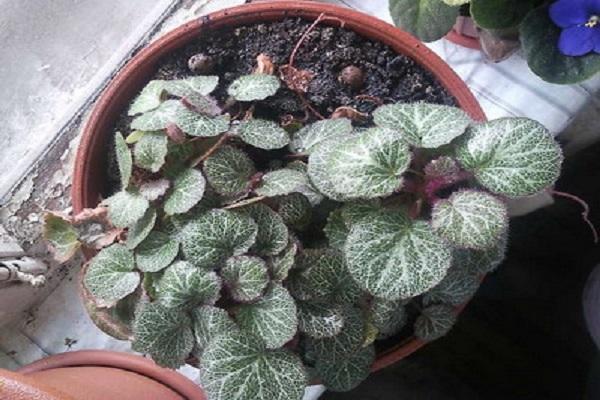
Illumination and temperature conditions
Saxifrage can be grown in partial shade. The pots are placed on the windows on the west or east side. Avoid direct sunlight. This will lead to a loss of juiciness by the leaves, they will become faded, lethargic and wrinkled. The saxifrage acquires the greatest decorativeness, depth of color and clarity of the pattern under diffused lighting.
During the growing season, the plant needs to maintain a temperature regime from +20 C to +25 C degrees. With a greater increase in temperature, frequent ventilation or transfer of plants to fresh air (outside or on a balcony) is necessary.
The saxifrage tolerates wintering well. But one condition must be observed - a comfortable temperature for the plant during this period is not higher than +12 C, +15 C degrees.
How to water
Watering in winter must be done carefully, trying to prevent water from getting on densely pubescent foliage. Otherwise, fungal diseases will quickly develop, and the plant will simply rot. In summer, moderate, but regular watering is carried out, as the topsoil dries up. Use soft, settled water at room temperature. When watering, it is highly undesirable to "flood" the plant or allow water to stagnate.

Moisturizing
The saxifrage is characterized by excellent tolerance to dry air. With a cool winter, you can do without spraying from a spray bottle. But in the hot summer months, systematic, but light spraying is necessary, with a frequency of 2-3 times a week.
Soil mixture
Saxifrage in nature grows in harsh conditions, therefore, when grown as a house plant, it is not particularly demanding of soil mixture. But for its good development, the soil must be air and moisture permeable. The substrate can be easily prepared by yourself or purchased ready-made in the garden center. The correct soil mixture should consist of:
- 2 pieces of leafy land;
- 1 part turf;
- 1 part of non-acidic peat;
- 1 part coarse sand;
- and finely detailed stones.
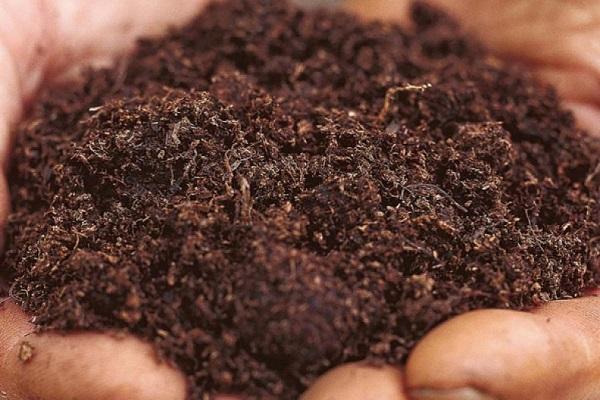
Fertilizer
Saxifrage is fertilized only during the period of active growth. Moreover, it is better to underfeed than overfeed. Nitrogen fertilizers are practically not used, but the use of phosphorus-potassium fertilizers several times per season will only benefit.
Transplant features
Shrubs are transplanted when the roots of the plant are massively peeking out of the drainage holes. This means that there is not enough room for the root system in the old pot. Transplant a flower at any time while the plant is in a state of active growth.
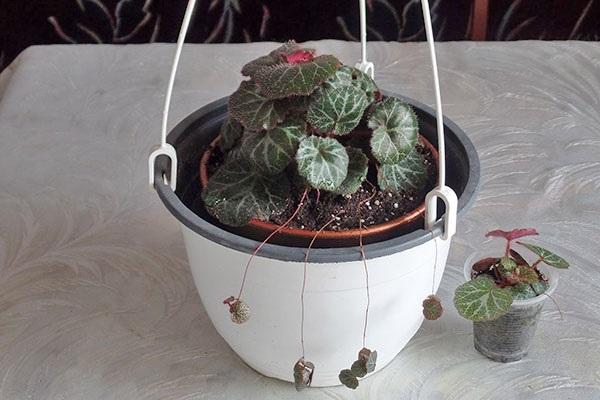
Diseases and pests
No matter how unpretentious the saxifrage is, it is still affected by some diseases and pests. These are spider mites, worms (root pests) and green aphids.
Spillage of soil or root locks in a solution of Aktara insecticide will help from the worm, and spraying with Actellik insecticide acaricide will help from the rest.
The main diseases to which saxifrage are prone are powdery mildew, rust and spotting. Copper-containing preparations, in particular copper oxychloride, will help to combat them.
Breeding methods
Reproduction of saxifrage is not difficult. Can be grown by dividing a bush, rooting outlets, or sowing seeds.
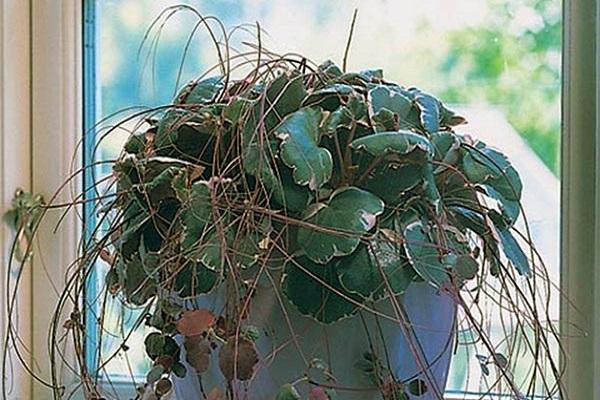
Seeds
Saxifrage seeds are highly germinating. After sowing, they germinate within a week, but before that they must undergo stratification. When sowing, the seeds are scattered over the surface of the soil and slightly pressed down. After carefully spraying, the container with seeds is covered with foil and placed in a warm place. For germination, it is necessary to maintain the temperature from +18 C to +20 C degrees.
Shoots
When the plant has faded, reproduction can be carried out by dividing the bush. The rosettes are carefully separated by hands from the mother plant. Then they are rooted in the shade, like independent seedlings. It is imperative to protect young seedlings from direct sunlight.
Outlets
The most effective breeding method is by rooting outlets. We put small pots with a substrate or small cassettes - up to 10 cells near the flowerpot with a saxifrage. We place the rosettes in the center of the pots and pin them to the ground. Then the soil is poured abundantly, and then it is regularly sprayed, until rooting.After the roots grow back, the whiskers coming from the mother plant are cut off.
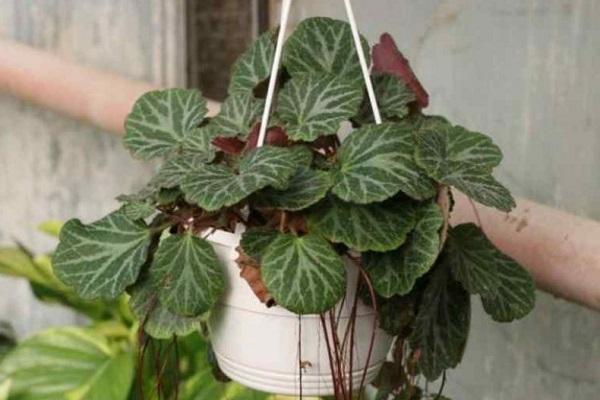
Growing problems
The main problems in growing are overflow or, conversely, stagnation of water, violation of the temperature regime during wintering, burning of leaves in the sun, damage by some diseases and pests.

